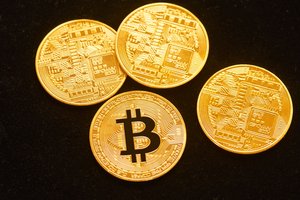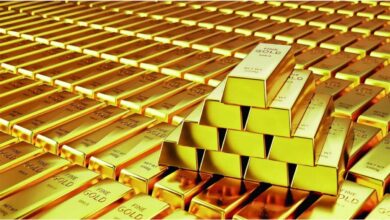Silver’s shine creates FOMO, but its silver lining is a cautionary tale

With a 43% return, it has even outshone gold’s 37% rally. Currently, silver’s spot price on the Commodity Exchange Inc. (Comex) is $42.5 per ounce, still shy of its $50 peak in 2011.
However, the story doesn’t end with this silver lining.
Experts caution that silver’s shimmer may prove fleeting, with turbulent prices likely over the next couple of quarters amid global uncertainty. “Silver may not rise at the same pace over the next three months,” said Anil Ghelani, head of passive investments and products at DSP Mutual Fund.
Given silver’s unpredictability, prices may consolidate near $40 per ounce, but strong momentum leaves room for further long-term gains, he added.
Often dubbed the “devil’s metal”, silver has a history of extreme erratic behaviour during industrial demand headwinds.
According to experts, investors endured losses from 2012 to 2020, waiting eight years to break even.
It lost nearly half of its value between 2013 and 2015, with prices falling consecutively for three years, showed Bloomberg data.
Favoured route
They recommend a cautious, staggered approach to silver as lump-sum bets could expose investors to unsettling volatility.
“Silver works as a portfolio diversifier, but only in moderation. Chasing it for FOMO-driven outsized gains is a risky bet,” Kaustubh Belapurkar, director of fund research at Morningstar India, said.
Vishal Dhawan, managing director of Plan Ahead Wealth Advisors recommended building positions in silver through systematic investment plans (SIP) to avoid mistimed entries.
He also noted that exchange-traded funds (ETFs) offer retail investors the most practical route to silver, since physical bars carry storage costs and futures demand sophisticated knowledge and are more suited to short-term, tactical bets.
However, silver ETF returns often deviate from the benchmarks they aim to mirror due to fund management fees, trading costs, and rebalancing and liquidity issues.
Experts say a 2% deviation is acceptable for passive funds like ETFs, even if the ideal target is zero.
“Tracking error rarely deters investors from silver ETFs, since they are not materially different from that of gold ETFs,” Dhawan said. “It becomes a deciding factor when choosing between (silver) ETFs.”
Gold’s rival
Investors now have a growing array of silver ETF options, though gold still dominates the market. While 21 gold ETFs manage a total of ₹72,452 crore in assets, 16 silver ETFs have amassed ₹26,287 crore in assets under management, DSP Mutual Fund data showed.
This is because silver ETFs are relatively new, noted DSP’s Ghelani.
“They received Sebi’s approvals much later than gold ETFs, which were cleared even before commodities came under Sebi regulation,” Ghelani added.
Yet, the launch of 16 funds in just three years, compared with 21 over 18 years, underscores the soaring appetite for silver in recent years. While more silver ETFs might be in the pipeline, experts caution that these funds are still unseasoned, having yet to complete a full market cycle of five to seven years to prove their reliability.
But investors are resolute. “Aggressive portfolios have half of their precious metals allocation into silver, while conservative ones have 20-30%,” said Plan Ahead Wealth Advisors’ Dhawan.
Precious metals usually account for 10-15% of overall portfolios, and until recently, they were almost entirely in gold. But silver has been steadily gaining ground lately, tracking gold’s ascent amid global turbulence while benefiting from growing industrial applications.
A risky lining?
Heavy investments in solar energy, electric vehicles, and 5G infrastructure have fuelled global demand for silver lately, said Manav Modi, precious metal analyst at Motilal Oswal Financial Services. “Meanwhile, supply has stagnated with mine shutdowns in Indonesia and Chile adding further strain,” he added.
Amid this imbalance, DSP’s Ghelani said, silver demand will remain relatively inelastic, as it constitutes only a small fraction of the large-scale projects. That, he argued, makes current silver prices more sustainable.
However, Pranav Mer, vice president of commodity and currency research at JM Financial Services’ equity broking group, said even though robust industrial demand bodes well for silver, it also reduces its safe-haven appeal.
“Silver’s recent rally gained momentum only in May, after industrial metals began moving higher,” Mer said. “Its multiple uses make it more volatile than gold, which has steady central bank backing.”
In fact, Mer expected silver’s supply deficit to narrow in 2025 as per Silver Institute’s data, signalling a potential slowdown for the metal. “Supply is projected to rise 2-3% (year-on-year) while demand could decline 5-7% after two years of sharp price moves,” he added.
Kaynat Chainwala, associate vice president of commodity research at Kotak Securities noted macroeconomic uncertainty and the US economy’s health will steer silver’s sentiment in 2026. Any signs of a broader global slowdown, she added, could drag prices back to $36.5-37 per ounce before consolidating.
“Silver’s recent rally has been driven more by rate-cut expectations and dollar dynamics than by a surge in industrial demand,” argued Chainwala.
The CME FedWatch tool currently implies investors expect the US Federal Reserve to deliver about three 25 basis-point cuts by December 2025. “Any surprises on rate cuts will trigger the next move for silver,” she said.
“Meanwhile, deeper rate-cut bets can potentially push prices toward $49 per ounce in the medium term.”
Credit: Source link




